The Bryant Air Conditioning line is sought for its reliable and efficient cooling system. But what if the air it blows feels warm? If you are experiencing low cooling from your Bryant AC, we have put together useful information that should help.
There are a number of possible reasons why your Bryant AC is blowing hot air. It could be as simple as the wrong thermostat setting or, worse, a failing compressor. Here are some simple DIY troubleshooting tricks:
- Ensure thermostat mode is set to cool.
- Make sure air filters are clean.
- Keep condenser coils clean and fins straight.
- Remove enviro nmental obstructions.
- Ensure the condensate line is free of blockage.
- Check for refrigerant and duct leaks.
- Assess compressor function.
As we go through this article, we will explore available measures you can take in fixing and caring for your Bryant air conditioner. Keep scrolling down!
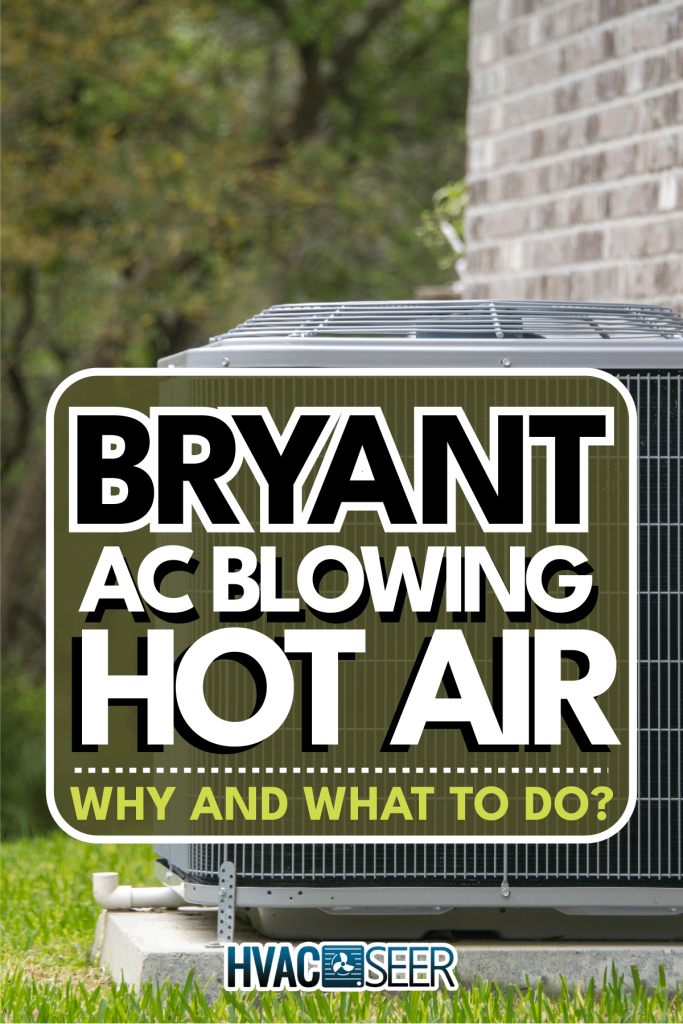
How To Fix Your Bryant Air Conditioner
If your Bryant AC is blowing hot air, do not panic. The first thing to do is assess whether your AC needs a major repair or minor tweaking. Here is a general checklist to guide you on what you need to do:
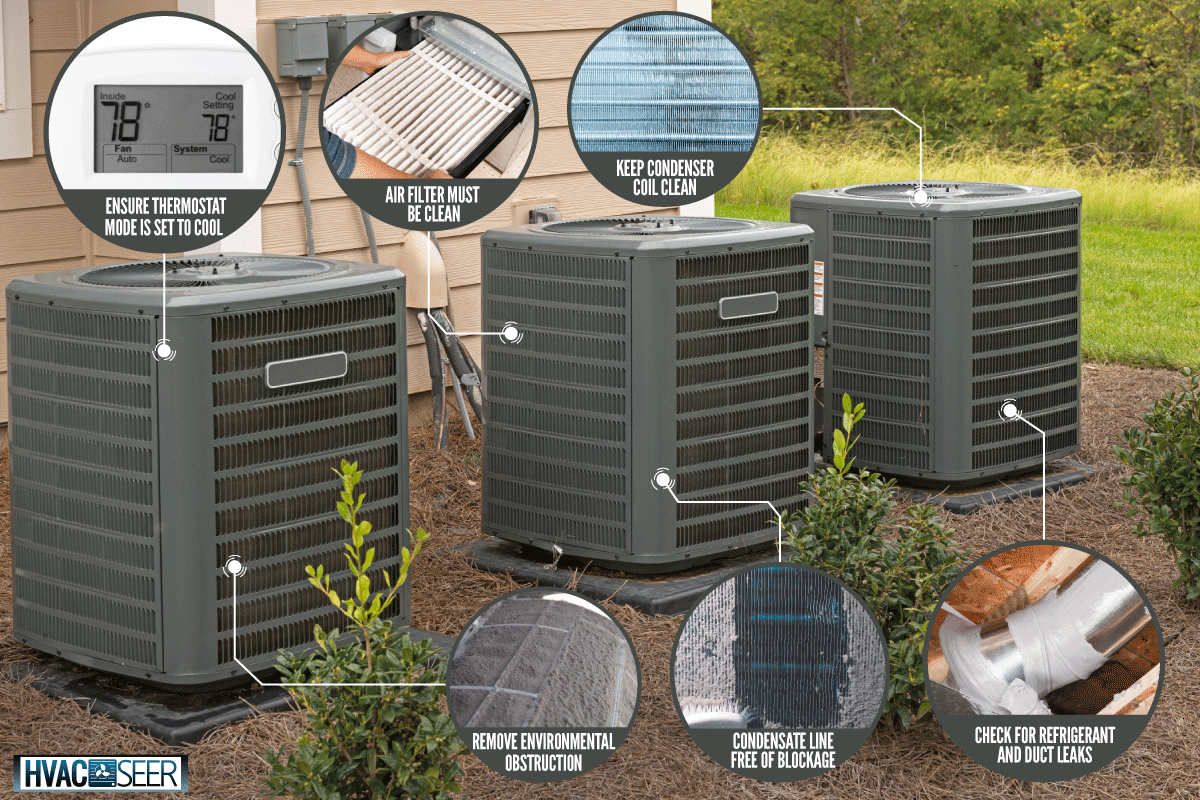
1. Ensure Thermostat Mode Is Set To Cool
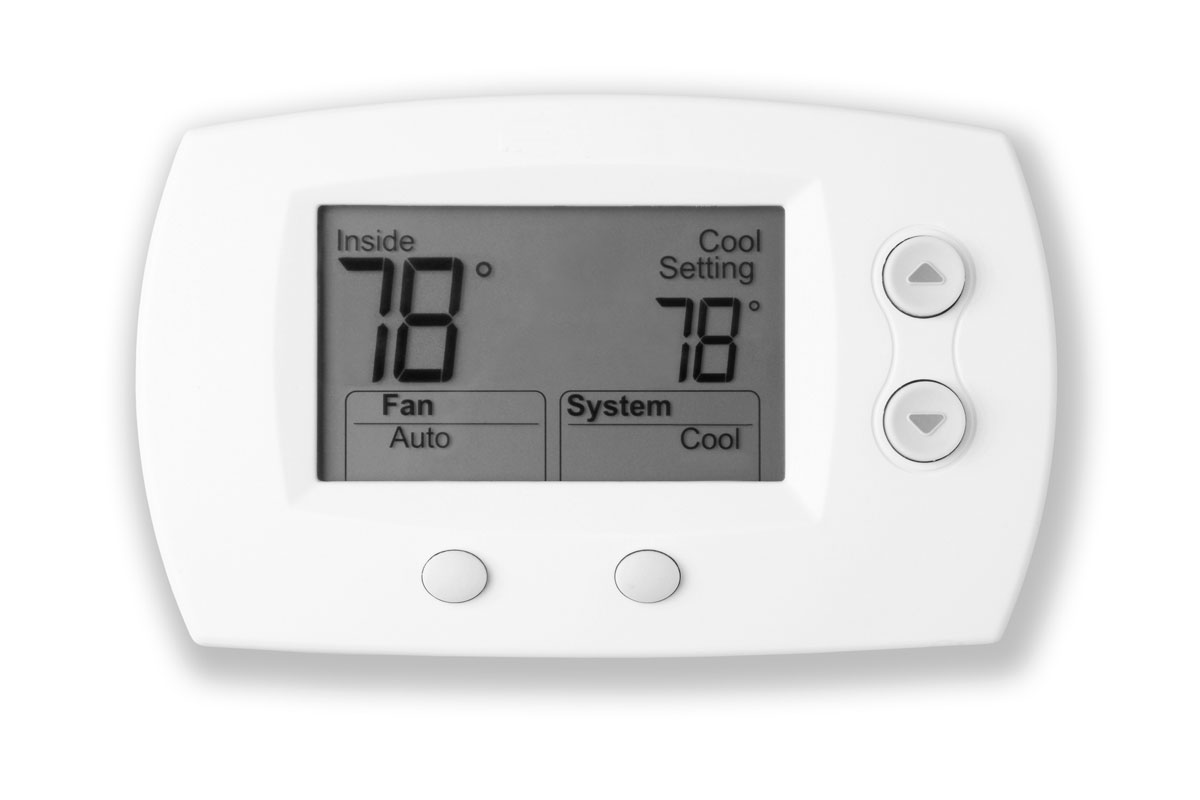
The Bryant thermostat of different AC models varies in features. The recent ones are programmable. It allows you to adjust its mode to suit your mood.
If you have the more popular thermostat models like the Evolution Connex Control, you'll find on the right side of the control interface the mode setting. Make sure it is set to cool.
2. Make Sure Air Filters Are Clean
Occluded filters can block the cold air from your air conditioner, causing your unit to blow warm air. There are various types of air filters, such as fiberglass, polyester, HEPA, and washable.
Regardless of the type, air filters need to be cleaned or changed every two to three months year-round, depending on usage.
You can conduct a simple test to check if your filter needs cleaning without popping your AC open. Just hang a piece of a clean white sheet at palm's length from your AC vent for at least an hour.
Your white sheet turning grayish is a definite sign for you to clean or replace your filter.
For reusable air filters, clean them in three easy steps:
Unplug AC and remove the air filter
Before removing the air filter, it is important to switch off the AC power first. Doing so prevents unfiltered air from circulating inside the house.
Locate your vent and unscrew its cover. Inspect the filter for damage and change it as necessary, otherwise, proceed to the next step.
Vacuum or wash the air filter
For a quick clean, you may choose to vacuum the dirt from the filter. Make sure to vacuum the filter outside to avoid reintroducing its dust into your home. For a more thorough clean, you may wash your air filters.
In a large bucket or sink, soak your filter in equal parts hot water and distilled white vinegar. Soak for about an hour and rinse. Avoid using harsh cleaning chemicals on your filter as this may cause damage.
Leave out to dry and return in place
Allowing your filter to air-dry will help prevent mold growth. Once dry, put it back in its place. Let the marks on the filter guide you to its proper placement. Screw the cover closed and turn the power back on.
3. Keep Condenser Coils Clean And Fins Straight
The main function of a condenser coil is to convert warm air vapor into sub-cool condensate. Since condenser coils are located outdoor, it is prone to dirt build-up.
Dirt blocks air flow and acts as an insulator, making heat transfer from the coil ineffective.
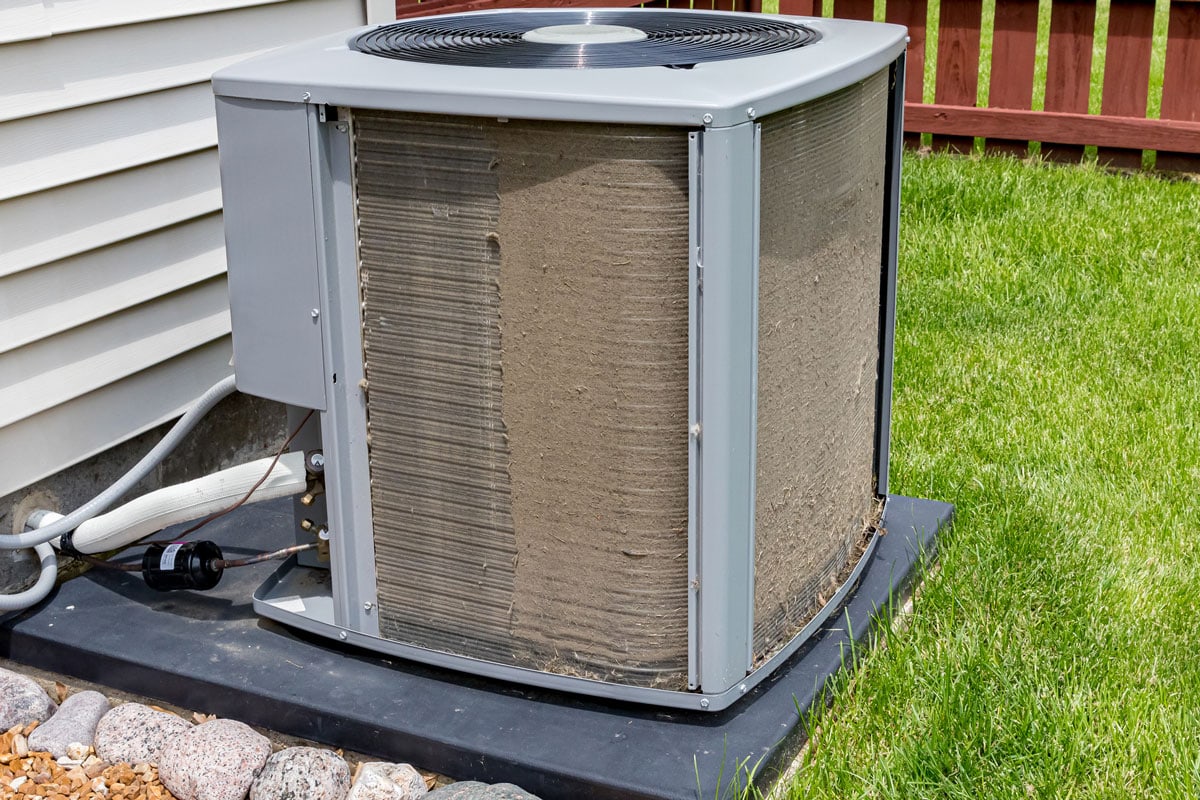
Another key aspect of effective heat transfer from the coils is straight condenser fins. Sometimes, condenser fins inadvertently get bent during maintenance.
Bent fins trap heat and can, eventually, reduce compressor life. You can straighten condenser fins with the use of a fin comb.


Check out this fin comb on Amazon.
Keep your condenser coils clean and their fins straight by applying these best practices:
- When washing your fins, use gentle water pressure and angle the hose down to avoid damaging the fins.
- You can use a light test to make sure the condenser coils have been cleaned.
With the help of a flashlight, you can conduct a light test. Before cleaning the coils, turn your flashlight on and illuminate the fins from inside the condenser.
Fins that are extremely dirty will not allow much light through. Repeat the same procedure after cleaning. Clean condenser fins should allow light to pass through.
4. Remove Environmental Obstructions
To ensure good airflow in your office or home, it is important to make sure your vent filters are free of any obstructions. Debris, such as leaves and overgrown weeds, can cause your condenser to work hard and overheat.
Removing any obstructions should help clear the problem.
The Environmental Protection Agency (EPA) also recommends that outdoor intakes should be more than 25 feet from any source of potential air contaminants.
The EPA also recommends proofing your condenser grille from birds and rodents to prevent nesting and roosting.
5. Ensure Condensate Line is Free of Blockage
The condensate line performs the very simple yet important function of removing moisture from inside your home. It is a PVC or metal tube that usually runs through the wall from your indoor unit to the outside of the house.
With moisture nearly always present, algae and dirt will often build up inside the line drain. A clogged condensate line can flood your indoor unit and make your home feel unpleasantly humid.
But don't worry, because we have a solution. Check out our article on "How To Clean An AC Condensate Line" for more details.
6. Check For Refrigerant And Duct Leaks
Refrigerants are chemicals inside your AC's evaporator and condenser coils that absorb environmental heat and provide cool air.
From the evaporator coils, the refrigerant changes state from high-pressure liquid to low-pressure gas as it passes through the condenser coils. The low-pressure gas will be cooled and expelled from the vents.
However, in cases of refrigerant leaks, the room may take a while longer to cool than usual.
Refrigerant leaks may be caused by any of the following:
- Corroded copper tube walls
- Improper and incorrect parts installation
- Factory defects of AC unit
- Natural wear-and-tear of coils
Apart from coils, natural wear-out can also happen to the system's duct works. When there are holes and leaks in your ducts, warm air mixes with the cold air, causing low cool air to blow from your vents.
In both situations, it is best to call a professional to help you get the best fix. Ignoring refrigerant and duct leaks may lead to impaired compressor functionality.
7. Assess Compressor Function
The compressor is the heart of your air conditioning unit. If it dies, then your AC is technically dead. Here are telltale signs of a dying compressor:
AC blows warm air
A failing compressor will not be able to pump refrigerant around the system. This results in a lack of cooling power as evidenced by the warm air coming from the vents.
The circuit breaker keeps tripping off
Your AC circuit breaker is your equipment's first line of defense. It trips when there is power overload to protect your machine from potentially damaging consequences.
Overloaded circuits can cause fires. So if your AC breakers trip, don't just flip the switch back on.
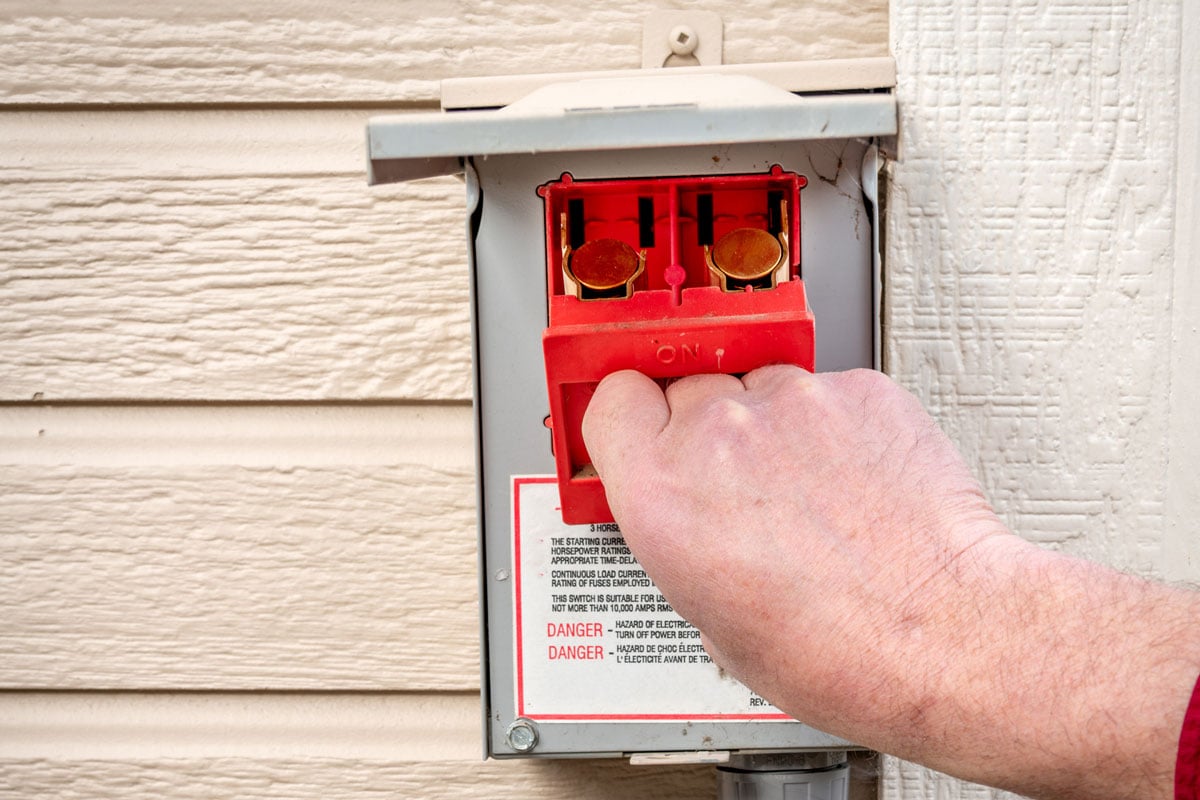
You can try resting your unit to help it cool down. After 30 minutes, restart your AC. If the breaker trips immediately, then that is your cue to contact your HVAC technicians.
The outdoor unit vibrates when turned on
Another clear sign that your AC system requires professional HVAC servicing is when your compressor is having a hard start. You will notice the compressor shaking when the unit is turned on. The compressor will overheat if not serviced immediately.
Noisy condenser
Is your condenser making worrisome noises? The sound might be due to a dislodged fan motor rattling inside the condenser unit.
Compressor failure can come from faulty electrical components or may be caused by mechanical wear. You must get this fixed quickly. A lot of strain can lead to bigger and possibly more expensive consequences.
What Is The Warranty On A Bryant Air Conditioner?
A 10-year warranty on standard parts is guaranteed for Bryant products registered within 90 days from their purchase. Beyond this period, only five years will be covered. Various warranty periods come with different AC models.
How Often Should An AC Be Serviced?
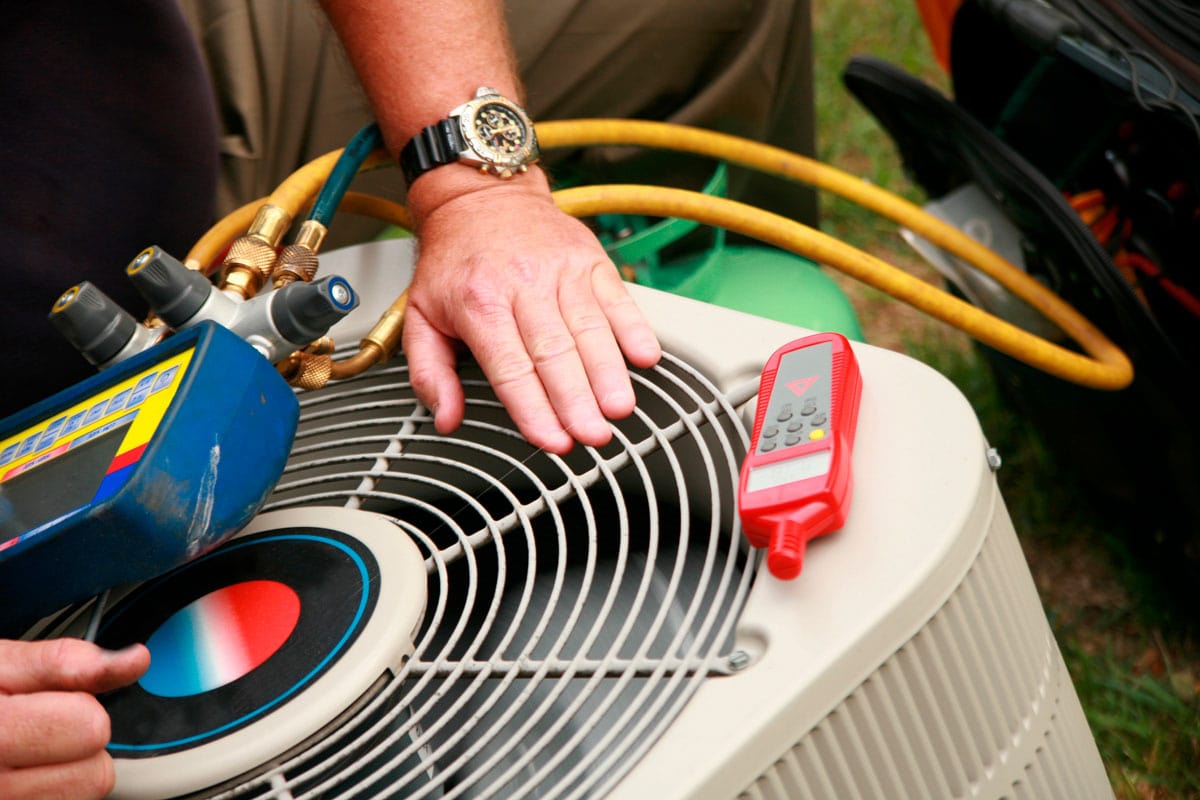
The frequency of AC servicing depends on the type you have. For reverse-cycle ACs, experts recommend comprehensive unit service at least twice a year. Service during autumn should prepare you for winter and, again, in spring for the coming summer.
Users of cooling-only units can opt once a year, during springtime. Of course, if your AC is used in full swing year-round, then it might need more frequent servicing.
To Wrap Up

The steps you take in caring for your AC system make a huge difference in its lifespan. The troubleshooting tips we have shared are preventive measures you can exercise regularly to optimize the life of your Bryant air conditioner.
But repair of mechanical issues, such as refrigerant and duct leaks and compressor function is something best left to professionals who have the technical know-how.
If your want to learn more, take a look at these related posts:
